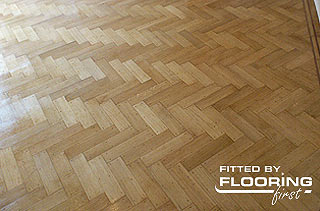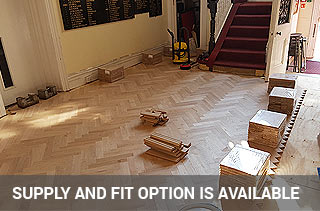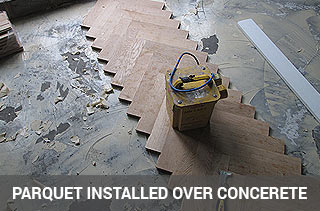Back to Parquet Fitting
Parquet Fitting In Large-Scaled Areas Explained
Parquetry has a long history. It is thought to be of Italian origin and it was Queen Marie de Medici who first requested the installation of parquetry in the Luxembourg Palace in the 1620s.
 Parquets, however, became truly popular after being introduced in the Palace of Versailles in the 17th century. It was an immediate hit with the aristocracy across Europe, largely due to the influence of the French court during that time. This particular parquet pattern even got its name - Parquet de Versailles.
Parquets, however, became truly popular after being introduced in the Palace of Versailles in the 17th century. It was an immediate hit with the aristocracy across Europe, largely due to the influence of the French court during that time. This particular parquet pattern even got its name - Parquet de Versailles.
Why do we go through this brief history lesson? Well, from the very moment of its birth, parquet flooring was used by royalty and nobility alike because of its beauty and style. Only the rich could afford such an opulent thing in their homes. Today, modern techniques have made the production of parquetry a lot cheaper but it remains a symbol of elegance.
Public places rely on appearances to attract people. It doesn’t matter if it is an office, school, pub or restaurant. People won’t come near a place which doesn’t make the right kind of impression to them. Even the smallest detail can make a difference as interior designers know pretty well. Parquet flooring can help make the right kind of difference!
Parquets: Pros and Cons
Naturally, parquetry has good and bad sides. First, it is a lot cheaper compared to the prices in the 17th century in France, actually, it is a very affordable flooring solution. Additionally, it is also long-lasting. Once a wooden floor begins to get worn and distressed, it should be refinished. The number of times you can sand its surface depends on the thickness of the floor. Solid hardwood parquets are a lot like solid plank flooring – can be refinished just as many times. This means that fitting a parquet in a commercial setting is a perfectly viable and even desirable option.
If parquets have a downside it lies in the fact that they will require a bit of maintenance. Every beautiful thing needs that bit of extra attention and parquetry is no exception.
Parquet Flooring in Commercial Settings
Parquet is not the most common choice for commercial settings but it is not because it lacks durability or strength. Quite the opposite. Parquet flooring is used for basketball courts and many famous teams have a square panelled parquet in their arenas.
The Boston Celtics had their parquet installed in the Boston Arena in 1946, then moved to Boston Garden in 1952 and lasted up to 1999 until the Boston Garden was demolished. By the way, the Celtics continue to play on a parquet even today. Seriously, though, it doesn’t matter where you want to install a parquet. Even in high traffic areas, it will hold well. If you can play basketball on it, the parquet can endure any abuse, right?

We Don’t Just Fit Parquet Blocks - We Supply Them
Parquets, especially old ones are something of great worth. Reclaimed parquets are incredibly popular right now and for a good reason. As the wood ages, it gains more than a character, it gains toughness and resilience. Years of contracting and expanding and the higher quality of the base material usually mean that such a parquet will tend to warp a lot less. FlooringFirst! understands the value of such floors and can source reclaimed blocks for your museum, gallery or different commercial project.
Parquet Floor Fitting: A Bit of Info

Parquetry can be installed over many types of subfloor like dry screed, concrete, plywood, oriented strand boards (OSB) or particleboard
The most important part of the parquet floor fitting is the preparation of the subfloor and moisture levels have a huge impact on it. The subfloor moisture reading should not be above 12%.
Parquet blocks require an acclimatisation period of 2-3 weeks before fitting because wood tends to expand and contract during the different seasons. This period will help the parquet become more stable and resistant to moisture.
The minimum drying time before walking on a newly installed parquet is 36 hours.